Strategic Auditing Presentation: Postgraduate Diploma in Finance
VerifiedAdded on 2023/02/03
|13
|680
|49
Presentation
AI Summary
This presentation on strategic auditing explores the core concepts of the auditing process. It begins with an introduction to auditing and its role in verifying financial statements. The presentation then delves into the identification and analysis of audit strategies, specifically examining the audit process, including gathering documents, preparing audit plans, meeting with superiors, conducting fieldwork, drafting reports, and holding closing meetings. The effectiveness of the audit monitoring process is evaluated, highlighting its importance in identifying problem areas. Audit risks, encompassing inherent, control, and detection risks, are discussed, along with measures to minimize these risks, such as segregation of duties and monitoring key processes. The presentation also addresses current developments in auditing, including information technology, advanced monitoring, and audit practices, concluding that auditing is vital for organizations to demonstrate a fair and true financial position.
1 out of 13
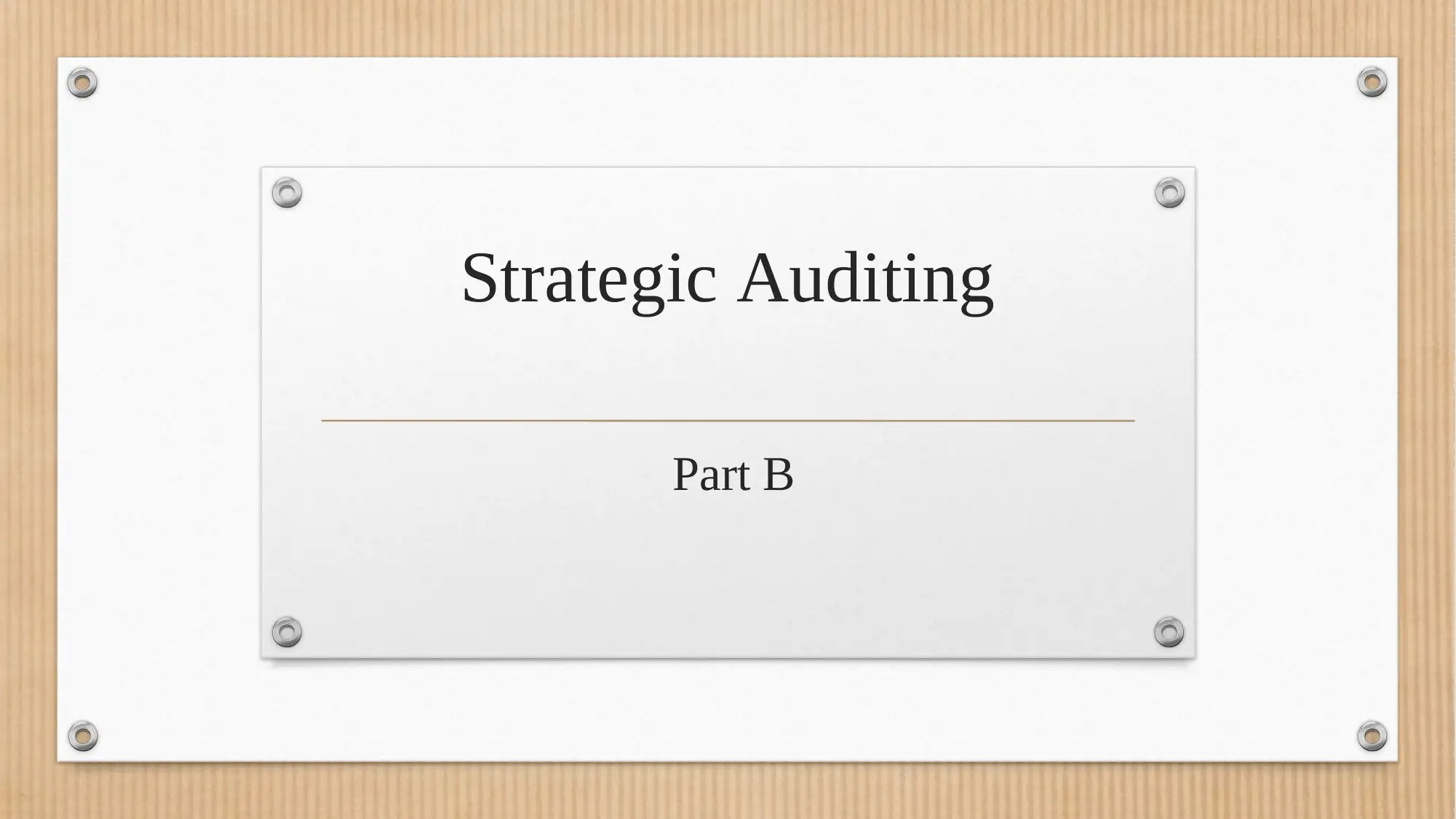
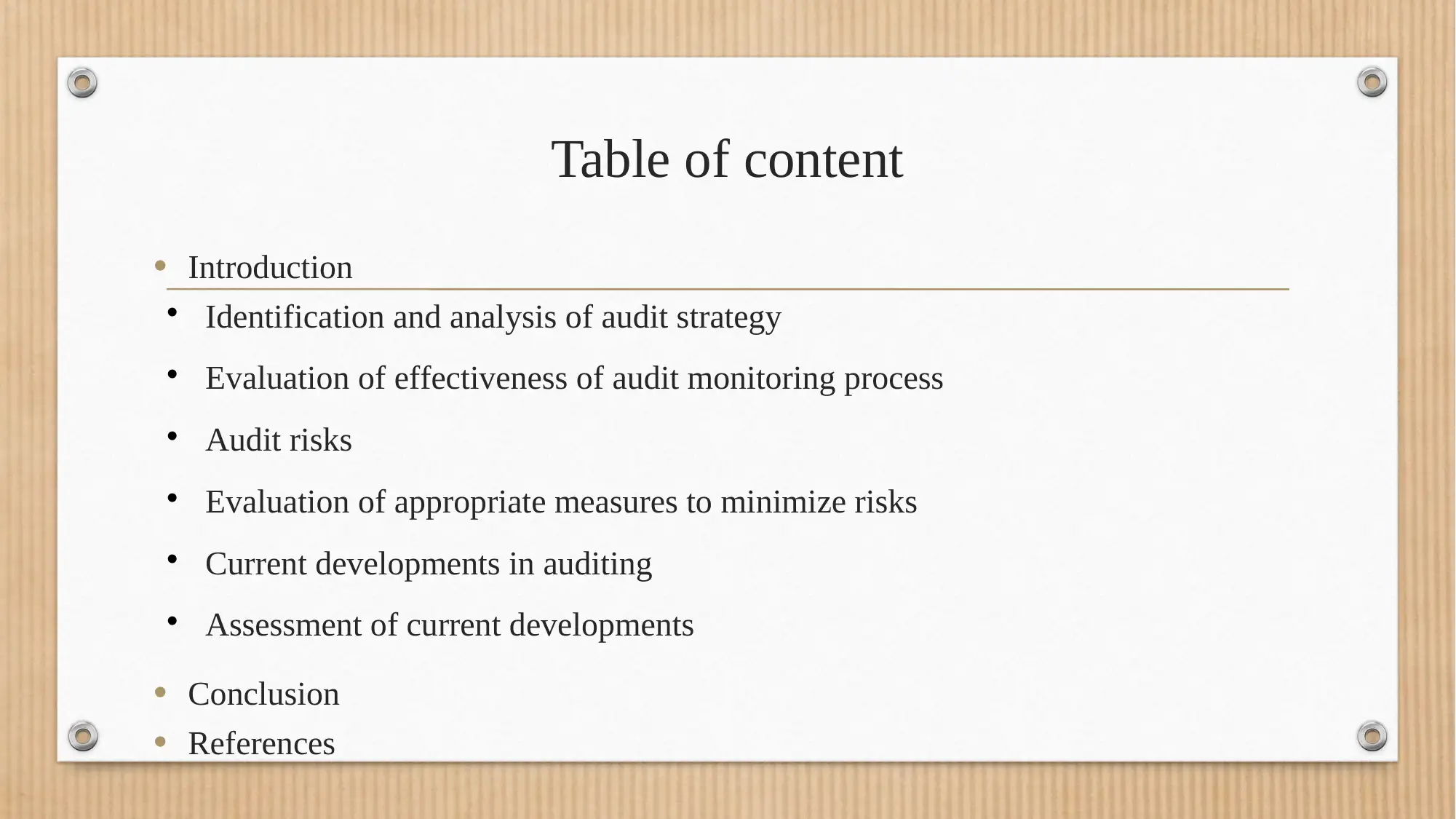
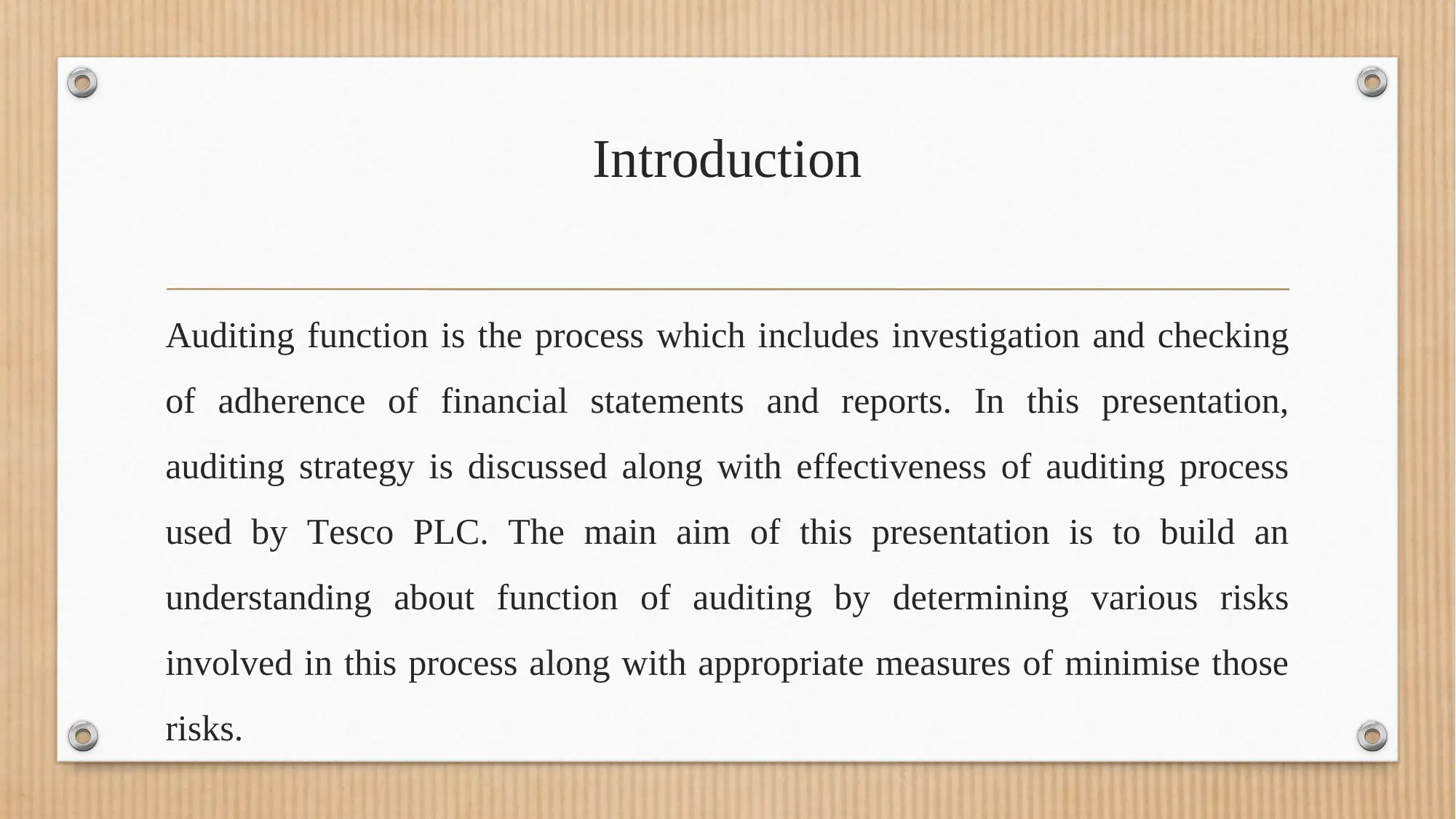

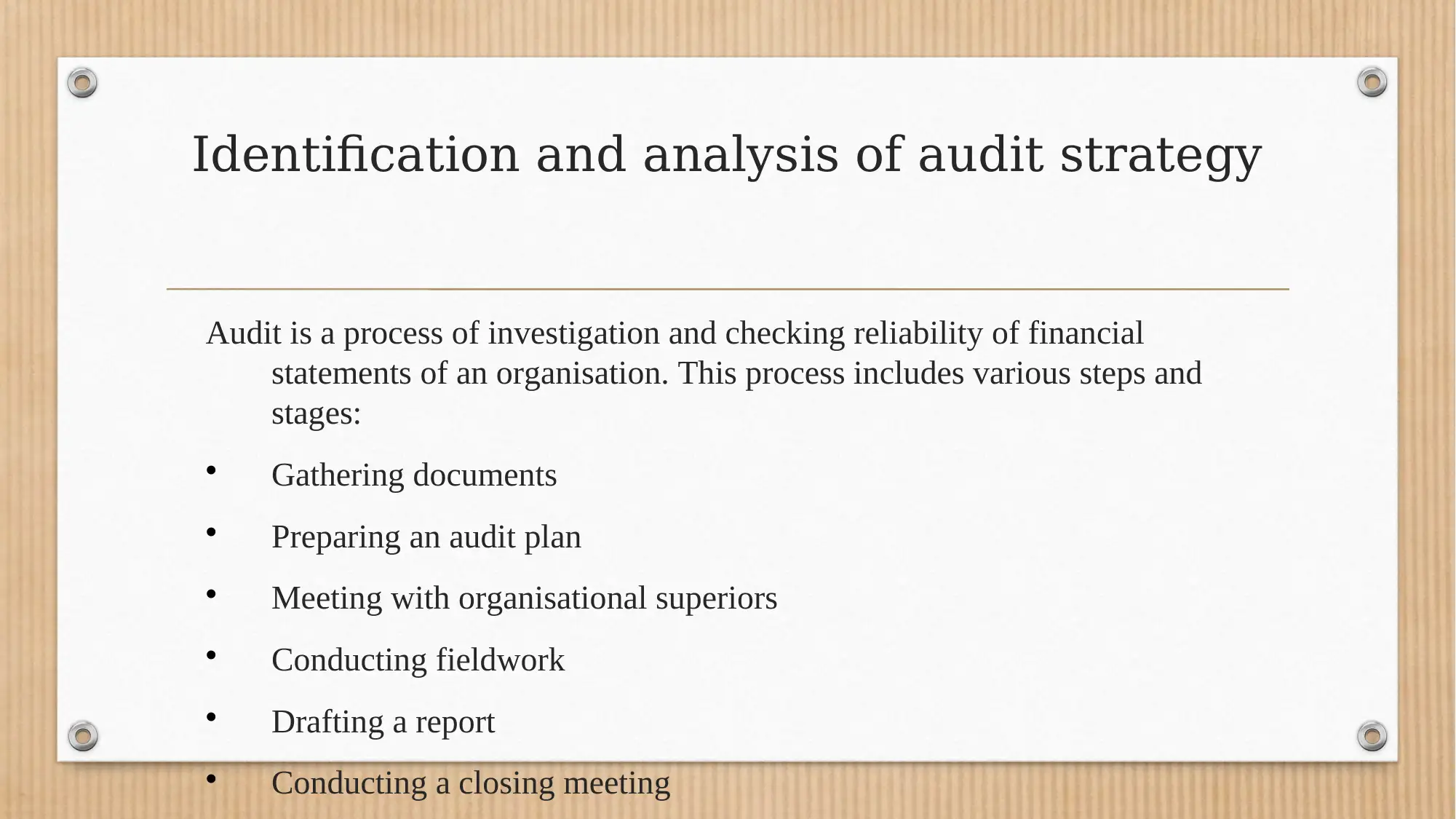
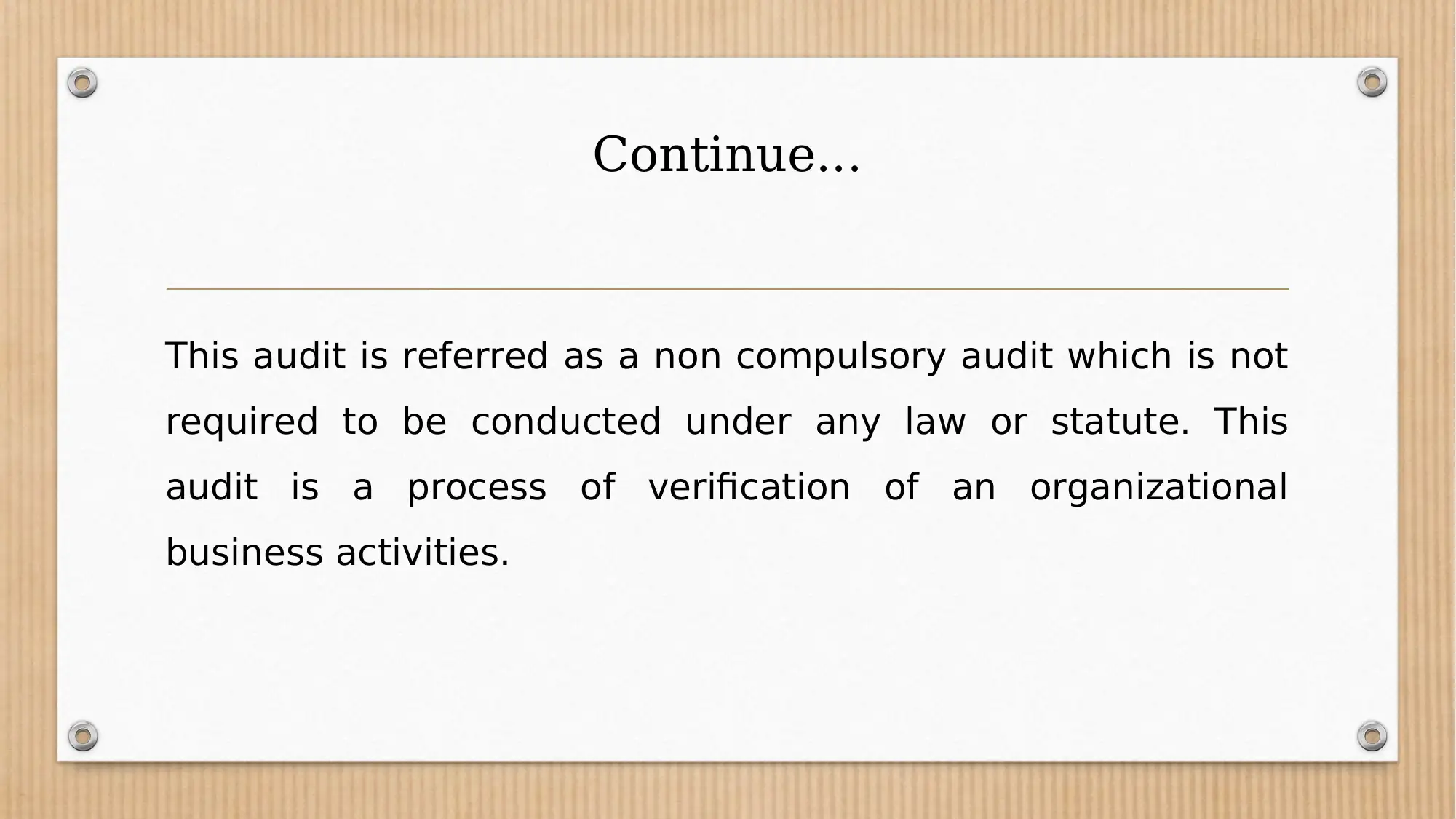
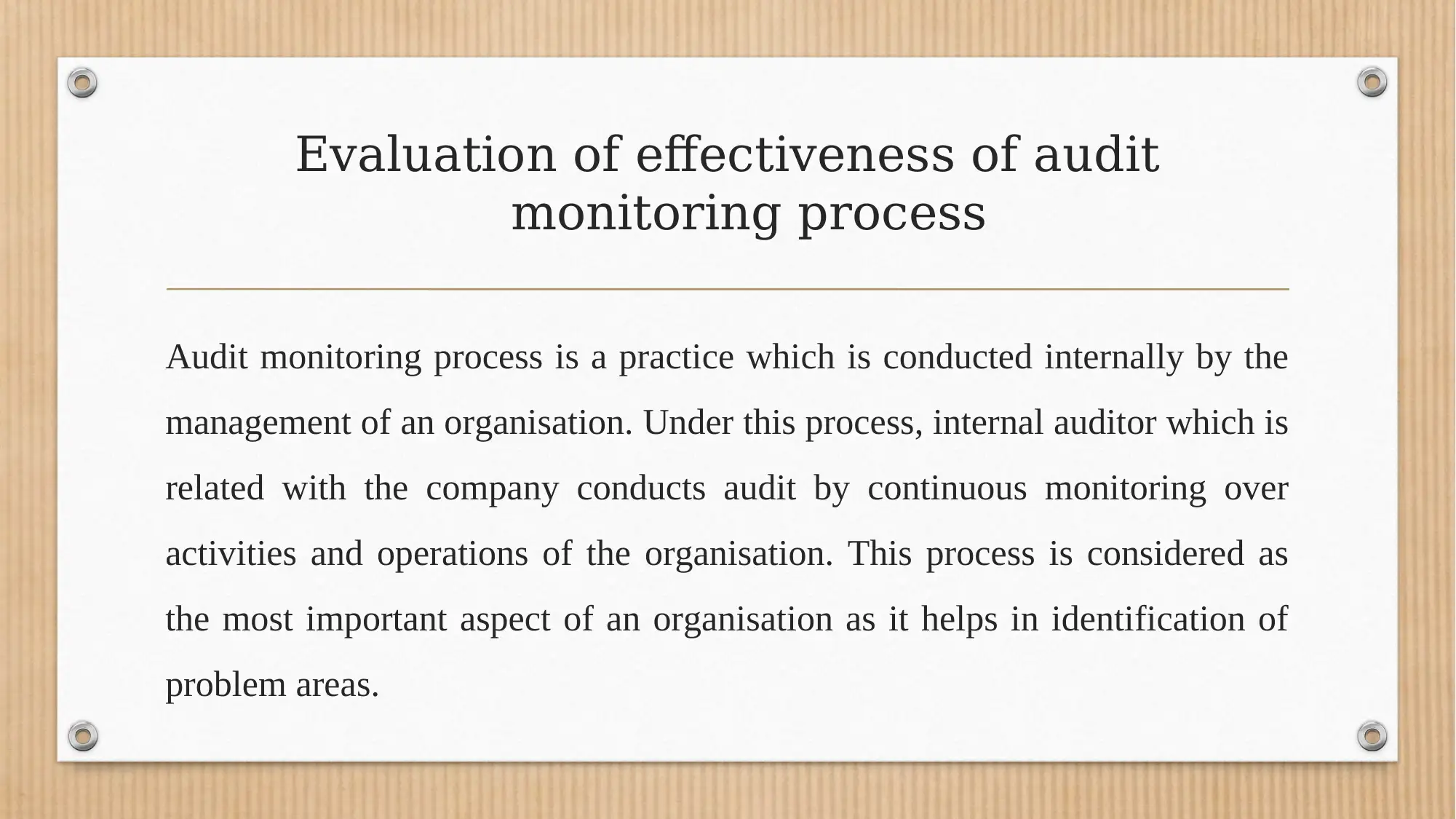
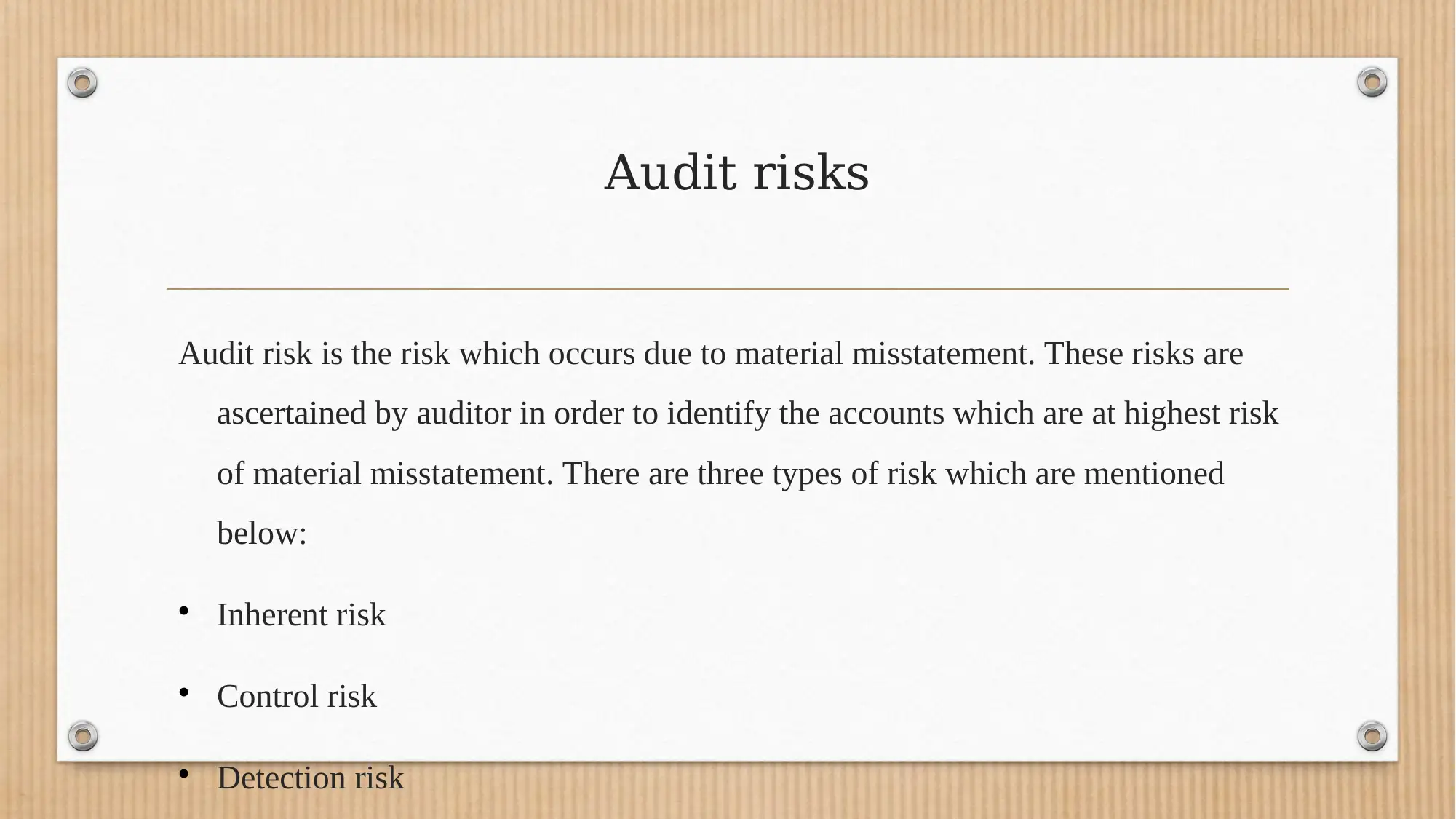
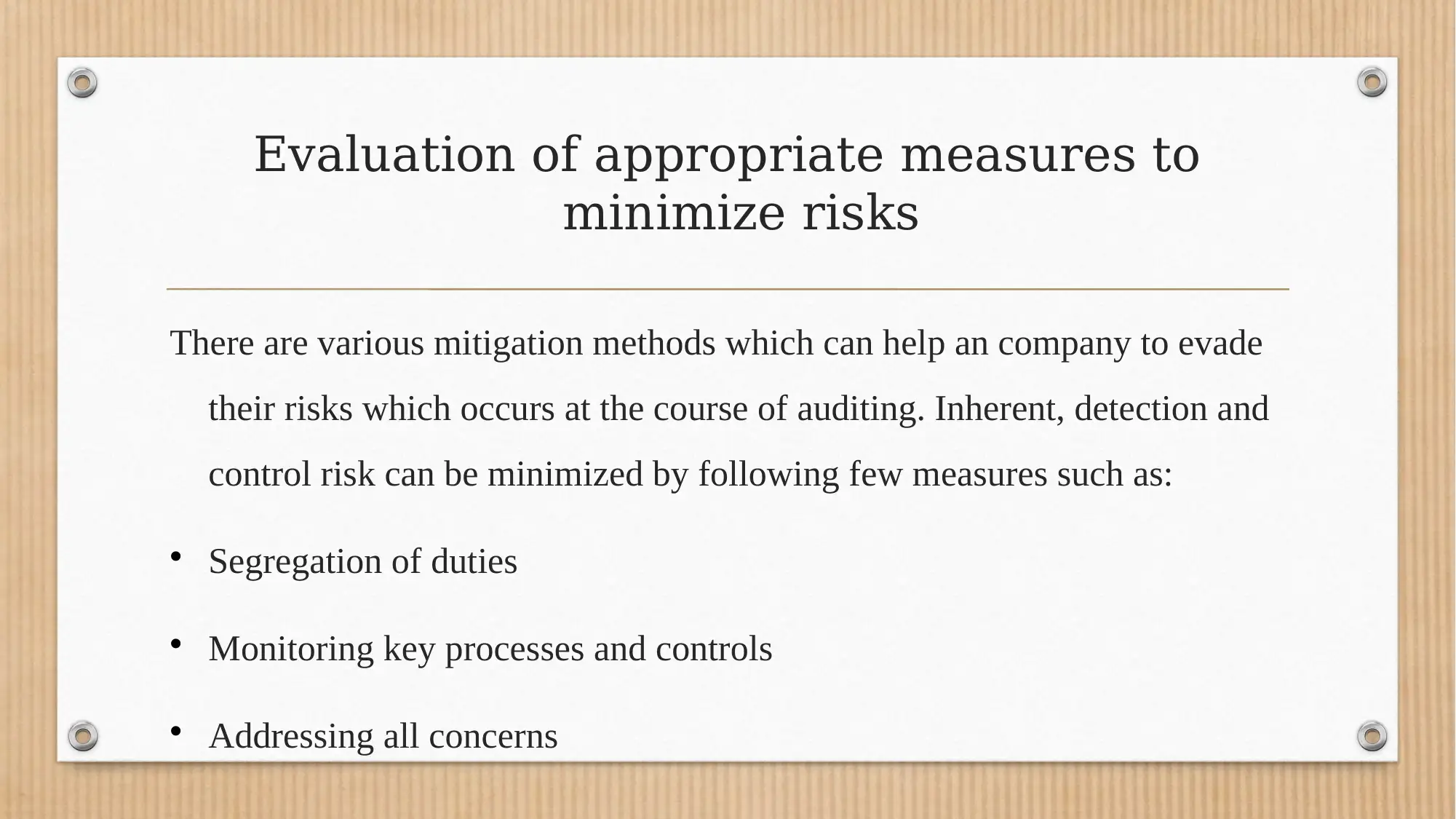
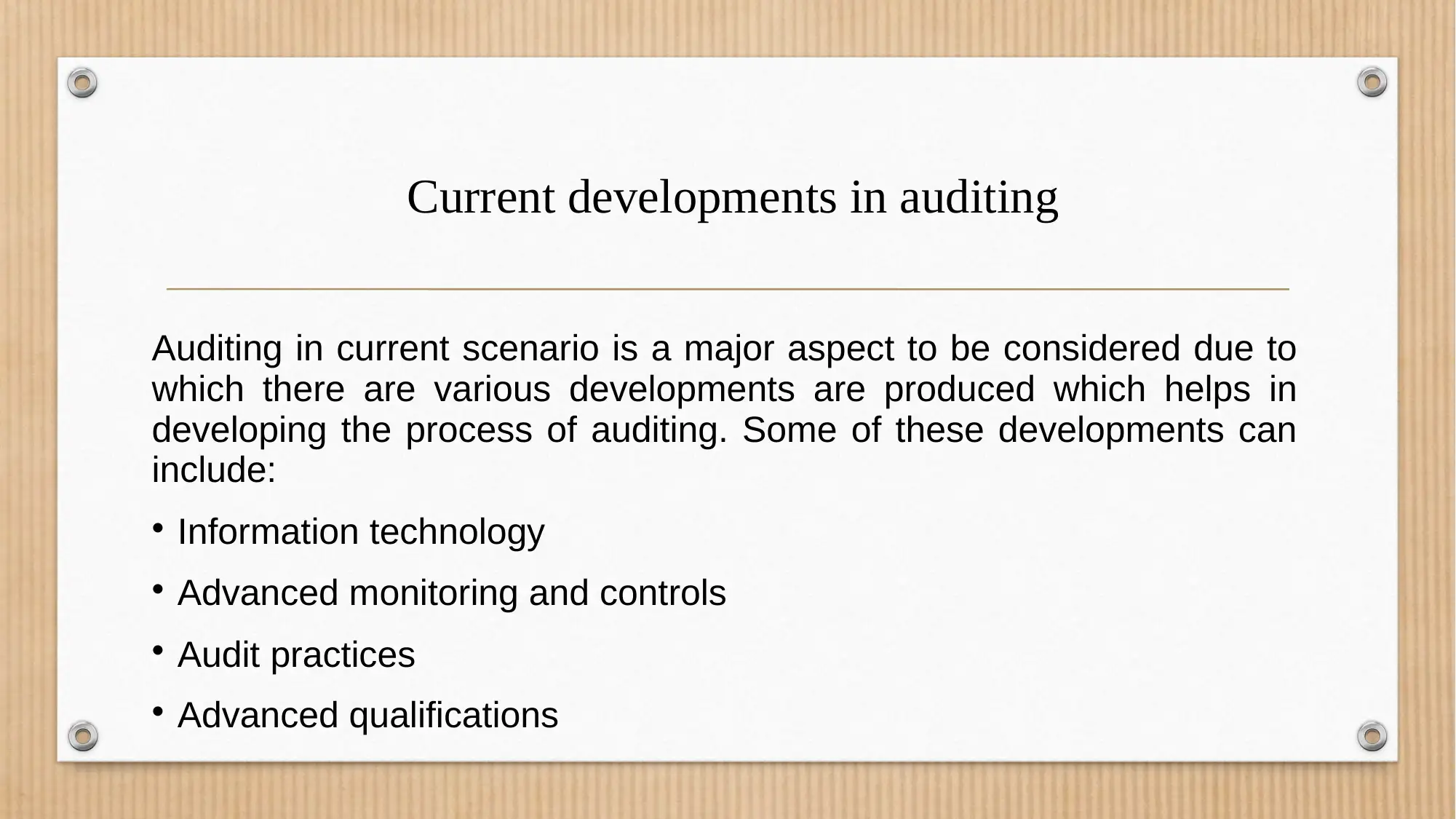
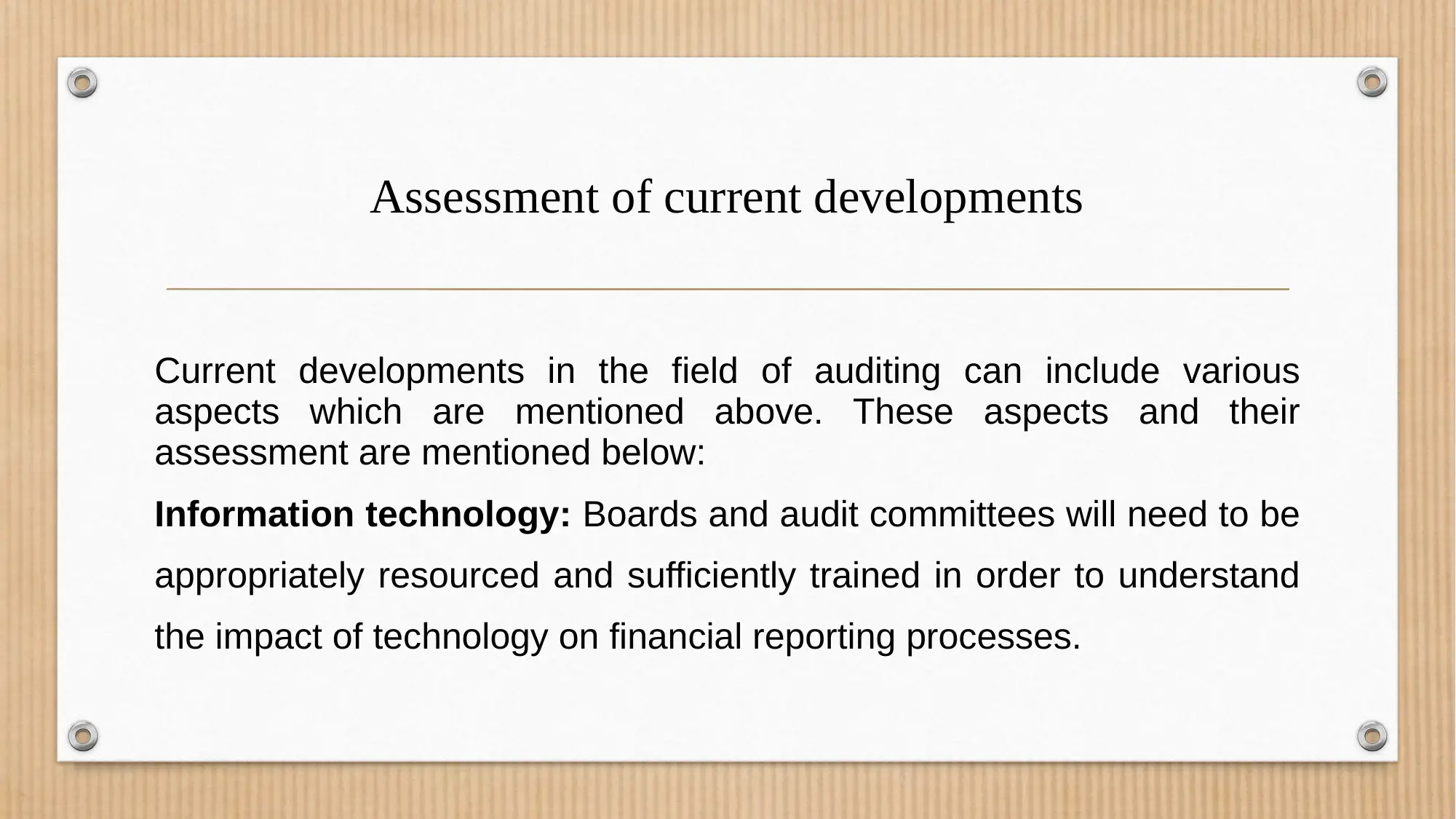
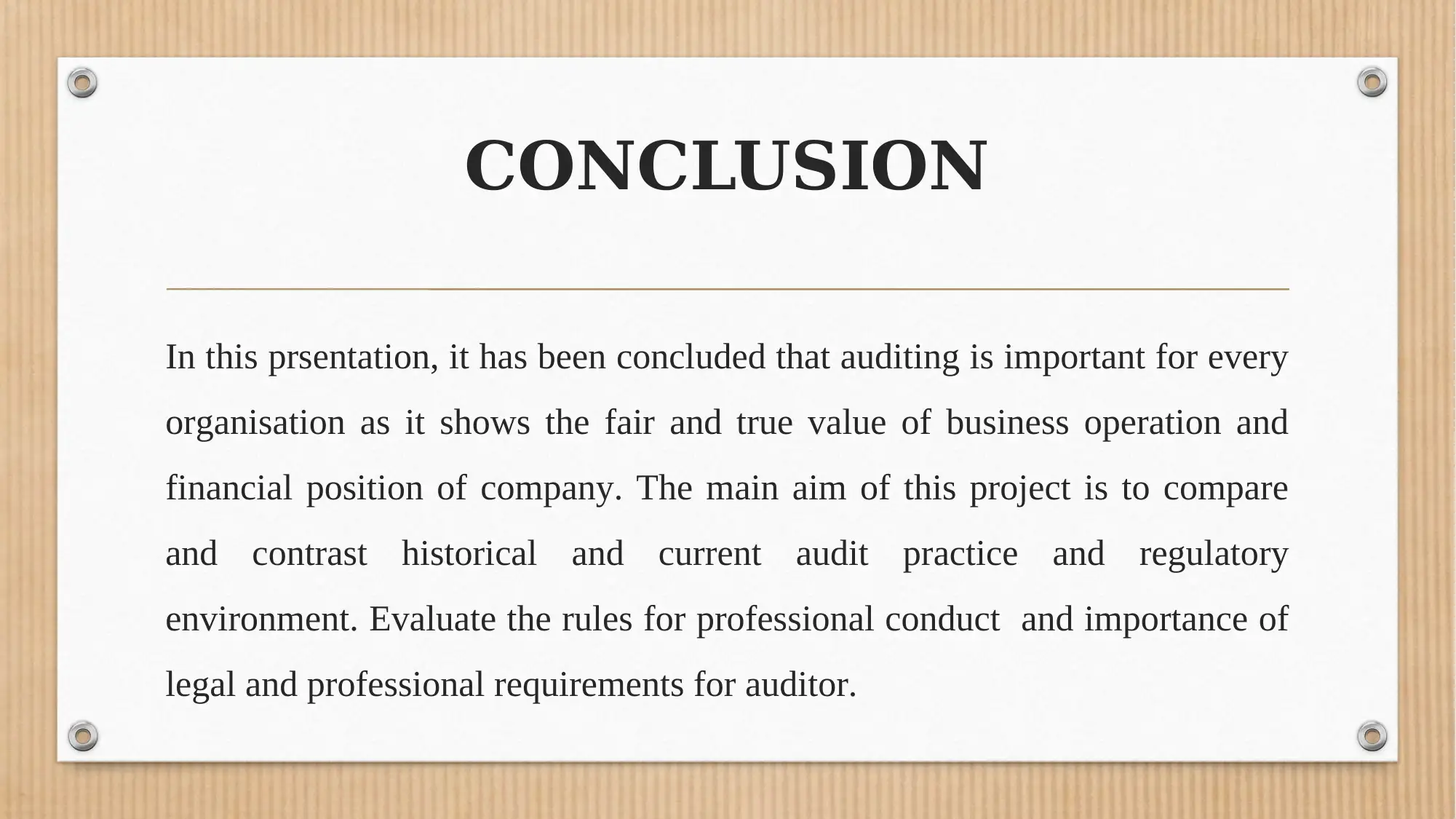
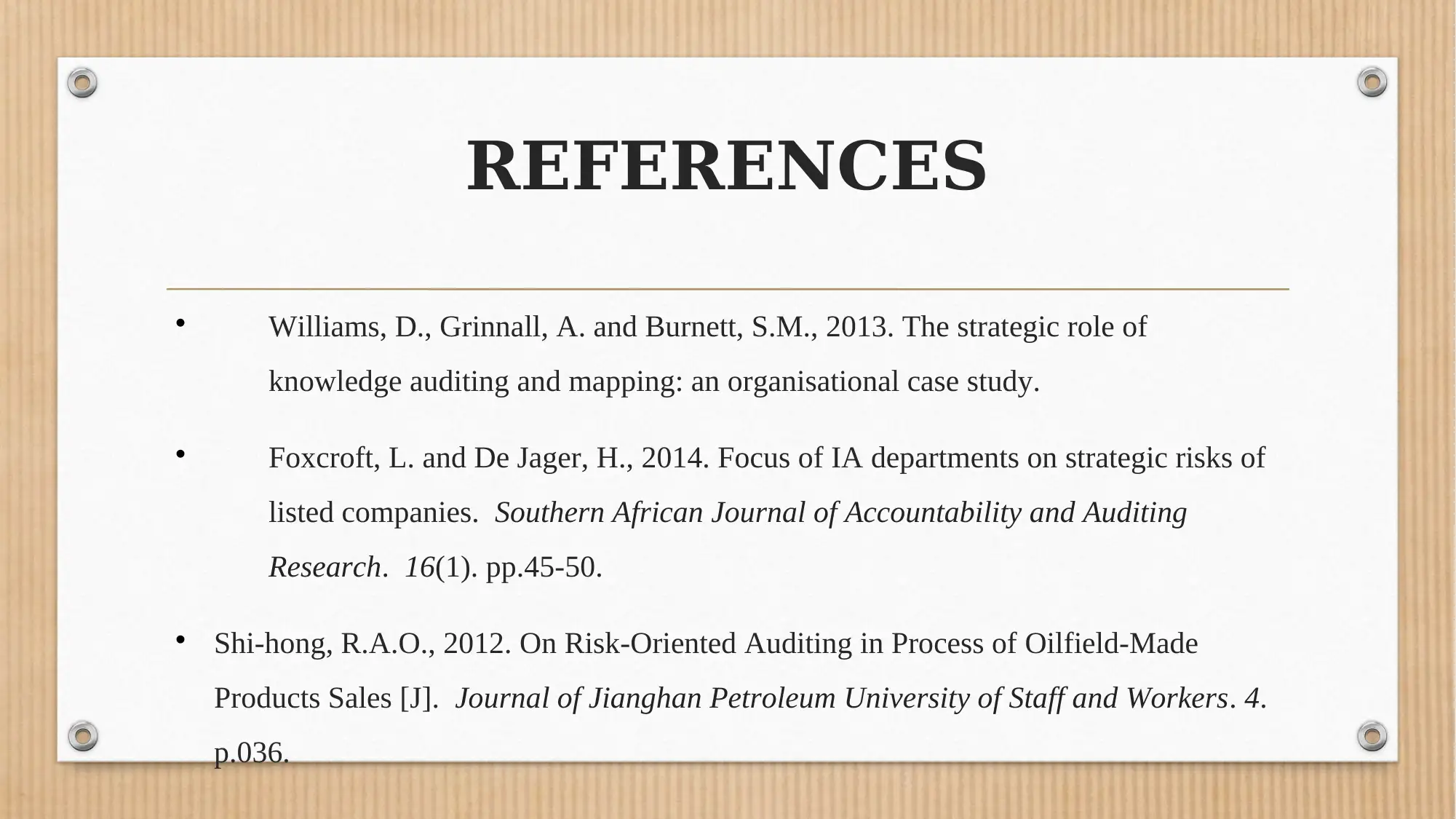






![[object Object]](/_next/static/media/star-bottom.7253800d.svg)